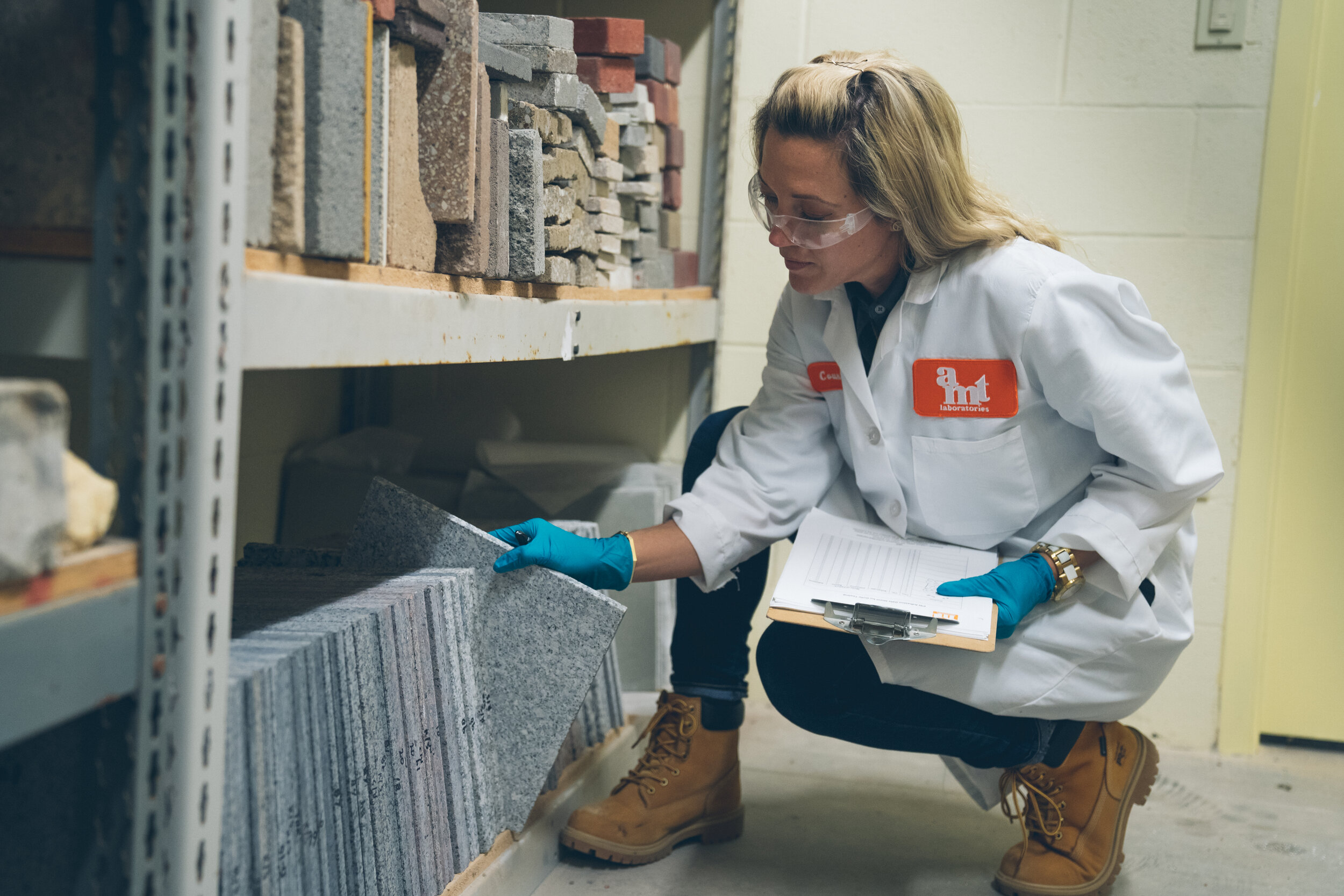Submitting your sample is easy.
Fill out the submittal form
Fill out our form for the sample submission including let us know what testing to be done.
Get the forms here.
Get your samples ready
Gather the samples to be tested. For cleaning tests, select samples with representative soiling. See our sample requirements here.
Uniquely identify each
Be sure to identify the samples with permanent marker.
Package & ship to AMT
Wrap samples in plastic and newspaper. Place plastic bags in a cardboard box and pack tightly with more newspaper, Styrofoam or other suitable packing material.

Submitting your sample is easy.
Fill out the form below to begin the process or just give us a call.
Sample size requirements
Analytical Testing
Small samples, approximately 4” x 4” x 1” are appropriate. The testing generally is conducted on the weathered surface.
Cleaning Testing
2-3 samples at least 6” x 6” x 1” are usually sufficient. Select samples with representative soiling.
Protective Treatment Testing
The appropriate size for protective treatment testing depends on the test requested. Generally, several samples of each substrate at least 6” x 6” x 1” will be sufficient. Please contact AMT Laboratories for specifics.
Conservation Treatment Evaluation
To ensure that test results will be meaningful, samples submitted to the laboratory must be representative of conditions. Since deterioration observed at one level or exposure of a building facade may differ dramatically from that occurring in other areas, extracting samples from a variety of locations is recommended.
With masonry materials, two-inch diameter cores, four to eight inches in length are normally sufficient. Select locations that are representative of the level(s) of deterioration. If possible, remove the cores with a dry coring process. If wet coring is used, portions of the pre-treatment testing program such as hygroscopic uptake and anionic salt analysis may be compromised. Note the coring procedure used on the sample submittal form. When requested to do so, the laboratory will retain two-inch "facings" from the back of submitted drill cores for reinsertion in the drill holes upon completion of the laboratory investigation.
Photographs documenting sample removal and elevation drawings identifying the point and method of extraction should accompany submitted samples. Include additional information about the microenvironment from which the samples were taken (e.g., prevailing winds, failed gutters or water deflecting devices, concentrated surface staining, etc.).
Pallet Tag Program
Samples for the Pallet Tag Program typically are shipped on a pallet with the samples wrapped in cellophane or packed in boxes. Each sample MUST be labeled on the side or the back with a permanent marker so the technician will know how to refer to each sample. For example, “Arctic White” block must be labeled as such on each sample. A packing list with the name of each sample and the number submitted is also requested.
Concrete Block: At least 3-4 samples of each type of concrete block are needed for testing. Please submit block faces only; not entire blocks.
Brick, Pavers, Cast Stone: At least 6-8 samples of each type are needed.
Natural Stone: If samples are as large as 12” x 12” x 1”, only 4-5 are needed. More samples are needed if they are smaller.
Manufactured Stone: Generally 10-12 samples of each substrate are needed since these tend to come in irregular sizes.




